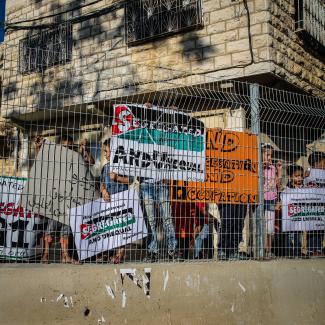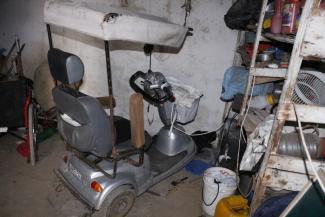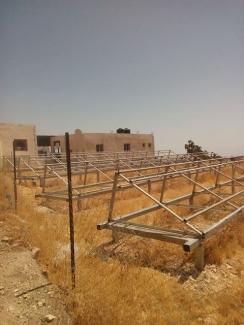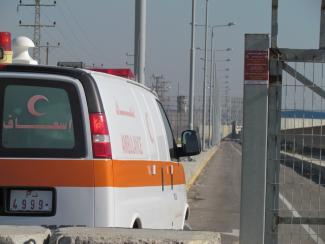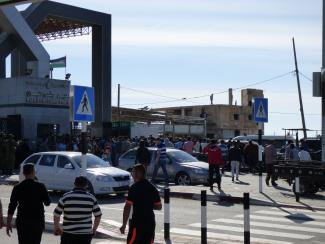A new fence installed by the Israeli authorities around two Palestinian neighbourhoods in the Israeli-controlled area of Hebron city (H2), As Salaymeh and Gheith, further separates up to 1,800 Palestinians from the rest of the city. This is in addition to the recent reinforcement (including the installment of turnstiles) of two pre-existing checkpoints controlling access to the area where the new fence was installed. These developments disrupt the livelihoods and family life of Palestinians living in the two neighbourhoods and limit access to basic services like health and education.
The Monthly Humanitarian Bulletin | September 2017
Gaza energy crisis further undermines the access of over 49,000 people with disabilities to critical life-saving services and devices. The rate of approval of patients’ applications for exit permits via Israel declined to an average of 53 per cent so far in 2017, compounded by delays in the financial approval for such referrals by the Ramallah-based Ministry of Health. Access of some 1,800 Palestinians in the H2 area of Hebron to services and livelihoods is further restricted due to a new fence and gate installed by the Israeli authorities. Nine educational-related structures seized on the eve of the new school year on grounds of lack of building permits, in three Area C communities, already affected by a coercive environment.
In this document
People with disabilities and special needs have been disproportionately affected by the deterioration in living conditions in the Gaza Strip since March 2017. This situation is driven by a worsening energy crisis, which has resulted in outages of 18-20 hours a day, and an exacerbation of the salary crisis in the public sector, both of which are linked to an escalation in internal Palestinian divisions.1 In the midst of this crisis, Gaza’s unemployment rate reached 44 per cent in the second quarter of 2017 (April-June), up from 41.1 per cent in the previous quarter and 41.7 per cent in the same period of 2016.
The targeting of key service infrastructure in already vulnerable communities in Area C in recent months has exacerbated the coercive environment and places residents at risk of forcible transfer. In August, on the eve of the new school year, the Israeli authorities requisitioned nine educational-related structures serving 170 children in three such communities.
The volume of people allowed to move in and out of Gaza has declined further since the beginning of 2017 in comparison with the previous two years, particularly via the Israeli-controlled crossing (Erez). Movement via Rafah, the Egyptian controlled crossing, also remains at extremely low levels. This has exacerbated the isolation of Gaza from the remainder of the oPt and the outside world, further limiting access to medical treatment unavailable in Gaza, to higher education, to family and social life, and to employment and economic opportunities. The tightening of restrictions in recent months has also obstructed the movement of national staff employed by the UN and international NGOs and impeded humanitarian operations.
Driven by ongoing electricity outages of 18-20 hours a day, an unresolved salary crisis in the public sector, and a blockade restricting the movement of people and goods, the humanitarian situation in the Gaza Strip remains extremely precarious.
